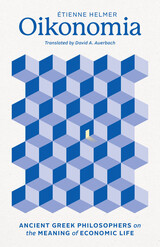4 books by Mark, David
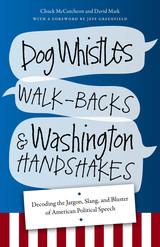
Dog Whistles, Walk-Backs, and Washington Handshakes
Decoding the Jargon, Slang, and Bluster of American Political Speech
Chuck McCutcheon and David Mark
University Press of New England, 2014
To the amusement of the pundits and the regret of the electorate, our modern political jargon has become even more brazenly two-faced and obfuscatory than ever. Where once we had Muckrakers, now we have Bed-Wetters. Where Blue Dogs once slept peaceably in the sun, Attack Dogs now roam the land. During election season—a near constant these days—the coded rhetoric of candidates and their spin doctors, and the deliberately meaningless but toxic semiotics of the wing nuts and backbenchers, reach near-Orwellian levels of self-satisfaction, vitriol, and deceit. The average NPR or talk radio listener, MSNBC or Fox News viewer, or blameless New York Times or Wall Street Journal reader is likely to be perplexed, nonplussed, and lulled into a state of apathetic resignation and civic somnolence by the rapid-fire incomprehensibility of political pronouncement and commentary—which is, frankly, putting us exactly where the pundits want us. Dog Whistles, Walk-Backs, and Washington Handshakes is a tonic and a corrective. It is a reference and field guide to the language of politics by two veteran observers that not only defines terms and phrases but also explains their history and etymology, describes who uses them against whom, and why, and reveals the most telling, infamous, amusing, and shocking examples of their recent use. It is a handbook of lexicography for the Wonkette and This Town generation, a sleeker, more modern Safire’s Political Dictionary, and a concise, pointed, bipartisan guide to the lies, obfuscations, and helical constructions of modern American political language, as practiced by real-life versions of the characters on House of Cards.
[more]
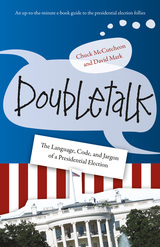
Doubletalk
The Language, Code, and Jargon of a Presidential Election
Chuck McCutcheon and David Mark
University Press of New England, 2016
The only time most Americans care anything about politics is during the presidential election cycle. This quadrennial flood of posturing and blame, once confined to the July conventions and the November election, has spread like a greasy lake across the landscape and calendar of our politics. From the first exploratory rumblings of the hopefuls sometime after the midterm elections to the tsunami of Super Tuesday, the political language of the presidential election has become a reflecting pool of our polity. Doubletalk casts a warm ray of sunlight on the campaign trail as an add-on to last year’s Dog Whistles, Walk-backs, and Washington Handshakes, with over 100 new terms, phrases, and epithets combining wit, humor, truth, and dubious taste and propriety.
[more]
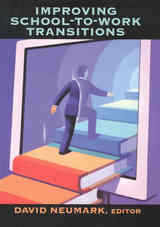
Improving School-to-Work Transitions
David Neumark
Russell Sage Foundation, 2007
As anxieties about America's economic competitiveness mounted in the 1980s, so too did concerns that the nation's schools were not adequately preparing young people for the modern workplace. Spurred by widespread joblessness and job instability among young adults, the federal government launched ambitious educational reforms in the 1990s to promote career development activities for students. In recent years, however, the federal government has shifted its focus to test-based reforms like No Child Left Behind that emphasize purely academic subjects. At this critical juncture in education reform, Improving School-To-Work Transitions, edited by David Neumark, weighs the successes and failures of the '90s-era school-to-work initiatives, and assesses how high schools, colleges, and government can help youths make a smoother transition into stable, well-paying employment. Drawing on evidence from national longitudinal studies, surveys, interviews, and case studies, the contributors to Improving School-To-Work Transitions offer thought-provoking perspectives on a variety of aspects of the school-to-work problem. Deborah Reed, Christopher Jepsen, and Laura Hill emphasize the importance of focusing school-to-work programs on the diverse needs of different demographic groups, particularly immigrants, who represent a growing proportion of the youth population. David Neumark and Donna Rothstein investigate the impact of school-to-work programs on the "forgotten half," students at the greatest risk of not attending college. Using data from the 1997 National Longitudinal Study of Youth, they find that participation by these students in programs like job shadowing, mentoring, and summer internships raise employment and college attendance rates among men and earnings among women. In a study of nine high schools with National Academy Foundation career academies, Terry Orr and her fellow researchers find that career academy participants are more engaged in school and are more likely to attend a four-year college than their peers. Nan Maxwell studies the skills demanded in entry-level jobs and finds that many supposedly "low-skilled" jobs actually demand extensive skills in reading, writing, and math, as well as the "new basic skills" of communication and problem-solving. Maxwell recommends that school districts collaborate with researchers to identify which skills are most in demand in their local labor markets. At a time when test-based educational reforms are making career development programs increasingly vulnerable, it is worth examining the possibilities and challenges of integrating career-related learning into the school environment. Written for educators, policymakers, researchers, and anyone concerned about how schools are shaping the economic opportunities of young people, Improving School-To-Work Transitions provides an authoritative guide to a crucial issue in education reform.
[more]
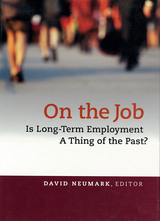
On the Job
Is Long-Term Employment a Thing of the Past?
David, editor Neumark
Russell Sage Foundation, 2000
In recent years, a flurry of reports on downsizing, outsourcing, and flexible staffing have created the impression that stable, long-term jobs are a thing of the past. According to conventional wisdom, workers can no longer count on building a career with a single employer, and job security is a rare prize. While there is no shortage of striking anecdotes to fuel these popular beliefs, reliable evidence is harder to come by. Researchers have yet to determine whether we are witnessing a sustained, economy-wide decline in the stability of American jobs, or merely a momentary rupture confined to a few industries and a few classes of workers. On the Job launches a concerted effort to reconcile the conflicting evidence about job stability and security. The book examines the labor force as a whole, not merely the ousted middle managers who have attracted the most publicity. It looks at the situation of women as well as men, young workers as well as old, and workers on part-time, non-standard, or temporary work schedules. The evidence suggests that long-serving managers and professionals suffered an unaccustomed loss of job security in the 1990s, but there is less evidence of change for younger, newer recruits. The authors bring our knowledge of the labor market up to date, connecting current conditions in the labor market with longer-term trends that have evolved over the past two decades. They find that layoffs in the early 1990s disrupted the implicit contract between employers and staff, but it is too soon to declare a permanent revolution in the employment relationship. Having identified the trends, the authors seek to explain them and to examine their possible consequences. If the bonds between employee and employer are weakening, who stands to benefit? Frequent job-switching can be a sign of success for a worker, if each job provides a stepping stone to something better, but research in this book shows that workers gained less from changing jobs in the 1980s and 1990s than in earlier decades. The authors also evaluate the third-party intermediaries, such as temporary help agencies, which profit from the new flexibility in the matching of workers and employers. Besides opening up new angles on the evidence, the authors mark out common ground and pin-point those areas where gaps in our knowledge remain and popular belief runs ahead of reliable evidence. On the Job provides an authoritative basis for spotting the trends and interpreting the fall-out as U.S. employers and employees rethink the terms of their relationship.
[more]
READERS
Browse our collection.
PUBLISHERS
See BiblioVault's publisher services.
STUDENT SERVICES
Files for college accessibility offices.
UChicago Accessibility Resources
home | accessibility | search | about | contact us
BiblioVault ® 2001 - 2024
The University of Chicago Press






